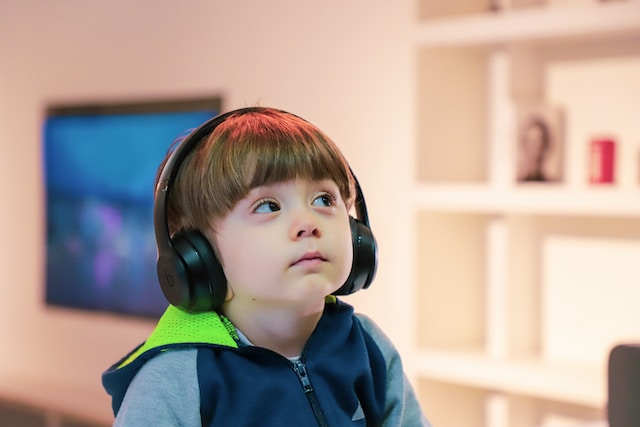How to Help Autistic Children Thrive and Reach Their Full Potential
Supporting autistic children in reaching their full potential is crucial for their overall well-being and success. By implementing effective strategies, we can create an inclusive environment that nurtures their unique strengths and abilities.

One of the key approaches to helping autistic children thrive is providing tailored support. Understanding their individual needs and preferences allows us to develop personalized strategies that cater to their specific challenges. This can involve creating visual schedules, using social stories, or implementing sensory-friendly environments.
Another important aspect is fostering a supportive network. Collaboration between parents, educators, therapists, and other professionals is essential in ensuring consistent support for autistic children. By working together, we can share insights, exchange ideas, and implement cohesive strategies that address the child’s needs holistically.
Furthermore, promoting acceptance and understanding within the community plays a vital role in helping autistic children reach their full potential. Educating others about autism spectrum disorder (ASD) helps reduce stigmatization and encourages empathy towards these individuals. When society embraces neurodiversity, it creates an inclusive environment where autistic children can thrive without unnecessary barriers.
By providing tailored support, fostering a supportive network, and promoting acceptance within the community, we can help autistic children thrive and reach their full potential. It is through our collective efforts that we create a world where every child has equal opportunities to succeed and flourish.
Understanding Autism Spectrum Disorder (ASD): Key Characteristics and Challenges
Understanding Autism Spectrum Disorder (ASD) is crucial in order to provide appropriate support and care for individuals on the spectrum. ASD is a neurodevelopmental disorder that affects communication, social interaction, and behaviour. It is characterized by a range of symptoms and challenges that vary from person to person.

The key characteristics of ASD include difficulties in social interaction, impaired communication skills, repetitive behaviours or interests, and sensory sensitivities. Autistic traits can manifest in different ways, such as difficulty understanding nonverbal cues, challenges with making eye contact or initiating conversations, and a preference for routines or sameness.
Autistic children face unique challenges that require understanding and tailored support. They may struggle with social interactions and find it challenging to form meaningful relationships. Communication difficulties can make it hard for them to express their needs or understand the intentions of others. Additionally, sensory sensitivities can cause discomfort or overwhelm in response to certain sounds, textures, or environments.
By gaining a deeper understanding of these characteristics and challenges faced by autistic individuals, we can create inclusive environments that promote acceptance and provide appropriate support for their needs. With empathy and knowledge about ASD, we can foster a more inclusive society where everyone has equal opportunities to thrive.
The Importance of Early Intervention: Identifying Signs of Autism and Seeking Professional Help
Early intervention is crucial when it comes to autism spectrum disorder (ASD). Identifying the signs of autism in children and seeking professional help at an early stage can significantly improve their developmental outcomes and quality of life.
Recognizing the signs of autism is the first step towards early intervention. Some common indicators include delayed speech or language skills, repetitive behaviors, difficulty with social interactions, and sensory sensitivities. It is important for parents, caregivers, and educators to be aware of these signs and take prompt action if they observe any concerning behaviours.
Seeking professional help is essential for an accurate diagnosis and appropriate intervention strategies. Autism specialists, such as paediatricians, psychologists, or developmental paediatricians, have the expertise to evaluate a child’s behaviour and development comprehensively. They can conduct assessments and guide suitable interventions tailored to the child’s specific needs.
Early intervention programs are designed to address the unique challenges faced by children with autism. These programs focus on improving communication skills, social interactions, behavior management techniques, and promoting overall development. The earlier these interventions are initiated, the better chance a child has at reaching their full potential.
By prioritizing early intervention for autism through timely identification of signs and seeking professional help promptly, we can make a significant impact on a child’s journey towards improved outcomes and a brighter future.
Creating an Enabling Environment: Structured Routines and Visual Supports for Autistic Children
Creating an enabling environment for autistic children is crucial to their overall well-being and development. One effective way to support them is by implementing structured routines and visual supports in their daily lives.
Routines provide a sense of predictability and stability for autistic children, helping them navigate through their day with less anxiety and confusion. By establishing consistent schedules for activities such as meals, schoolwork, therapy sessions, and playtime, parents and caregivers can create a structured framework that gives children a sense of security.
Visual supports play a vital role in aiding communication and comprehension for autistic children. Visual aids such as visual schedules, social stories, and visual cues help them understand expectations, transitions between activities, and social interactions. These visual tools provide concrete representations of abstract concepts, making it easier for autistic children to grasp information and follow instructions.
By incorporating structured routines and visual supports into the daily lives of autistic children, we can create an environment that promotes their independence, reduces stress levels, enhances communication skills, encourages positive behavior patterns, and fosters overall growth.
Effective Communication Strategies: Enhancing Social Skills and Language Development in Autistic Children
Effective communication strategies play a crucial role in enhancing social skills and language development in autistic children. Autism spectrum disorder (ASD) affects an individual’s ability to communicate and interact with others, making it essential to implement targeted techniques to support their unique needs.
One of the key communication strategies for autism is providing structured and consistent routines. Establishing predictable schedules and visual supports can help autistic children understand expectations, reducing anxiety and promoting effective communication. Additionally, incorporating visual aids such as picture cards or visual schedules can enhance language development by providing a concrete representation of concepts.
Another vital aspect is utilizing social stories and scripts. These tools help autistic children navigate social situations by providing step-by-step guidance on appropriate behaviors and responses. Social stories can be customized to specific scenarios, enabling children to practice desired social skills in a safe environment.
Furthermore, incorporating visual supports such as PECS (Picture Exchange Communication System) or AAC (Augmentative and Alternative Communication) devices can facilitate language development for non-verbal or minimally verbal individuals with autism. These tools provide alternative means of expression, allowing them to communicate effectively with others.
It is important to note that each child with autism is unique, requiring personalized approaches tailored to their specific strengths and challenges. By implementing these communication strategies consistently and working closely with professionals specializing in autism intervention, we can enhance social skills and language development in autistic children, empowering them to thrive in their interactions with others.
Sensory Sensitivities: Managing Overstimulation and Promoting Sensory Integration
Sensory sensitivities can greatly impact the daily lives of individuals, particularly those on the autism spectrum. The overwhelming sensory input from the environment can lead to overstimulation, causing distress and hindering their ability to function effectively. However, by understanding and implementing strategies for managing overstimulation and promoting sensory integration, we can create a more inclusive and supportive environment for individuals with sensory sensitivities.
For children with autism, engaging in sensory integration activities can be incredibly beneficial. These activities aim to provide controlled exposure to various sensory stimuli in a structured and supportive manner. By gradually introducing different textures, sounds, smells, and movements, children can learn to tolerate and process these sensations more effectively.
Sensory integration activities may include swinging or spinning on a swing set, playing with textured materials such as sand or playdough, listening to calming music or white noise, engaging in deep pressure activities like weighted blankets or compression garments, or participating in therapeutic exercises designed to stimulate specific senses.
By incorporating these activities into daily routines at home or school settings, we can help individuals with sensory sensitivities develop coping mechanisms that allow them to navigate their surroundings with greater ease. Moreover, promoting sensory integration not only benefits those on the autism spectrum but also enhances overall well-being by fostering self-regulation and reducing anxiety.
Understanding the challenges posed by sensory sensitivities is crucial for creating inclusive environments. By implementing effective strategies such as sensory integration activities tailored to individual needs, we can support individuals on the autism spectrum in managing overstimulation and promoting healthy sensory processing.
Inclusive Education: Supporting Autistic Children in Schools and Building Positive Relationships with Peers
Creating positive relationships with peers is crucial for the inclusive education of autistic children. By supporting inclusion in schools, we can foster an environment where all students, including those on the autism spectrum, feel accepted and valued.
One of the key aspects of building peer relationships among autistic children is promoting understanding and empathy. Educating classmates about autism and its unique characteristics can help reduce misconceptions and encourage acceptance. This can be done through awareness campaigns, workshops, or classroom discussions.
In addition to education, providing opportunities for shared activities and collaborative projects can facilitate social interactions between autistic children and their peers. Group projects or extracurricular activities that promote teamwork allow students to work together towards a common goal, fostering a sense of belonging and camaraderie.
Schools should also consider implementing structured support systems such as peer mentoring programs or buddy systems. Pairing neurotypical students with autistic children can provide them with guidance, support, and friendship. This not only benefits the autistic child but also helps develop empathy and understanding among their peers.
By prioritizing inclusive education for autistic children and actively supporting the building of peer relationships, schools can create an environment where everyone feels included, valued, and supported in their educational journey.
Conclusion:
By implementing these strategies with patience and understanding, we can create a supportive environment that allows autistic children to thrive and reach their full potential. With the right support system in place at home and at school, we can make a significant difference in the lives of these wonderful individuals.



